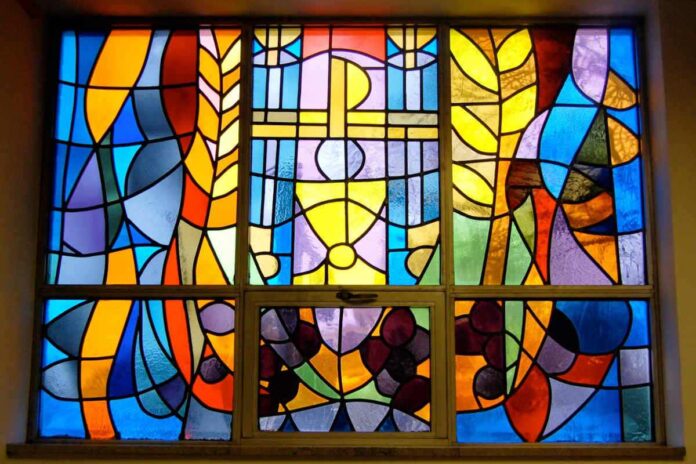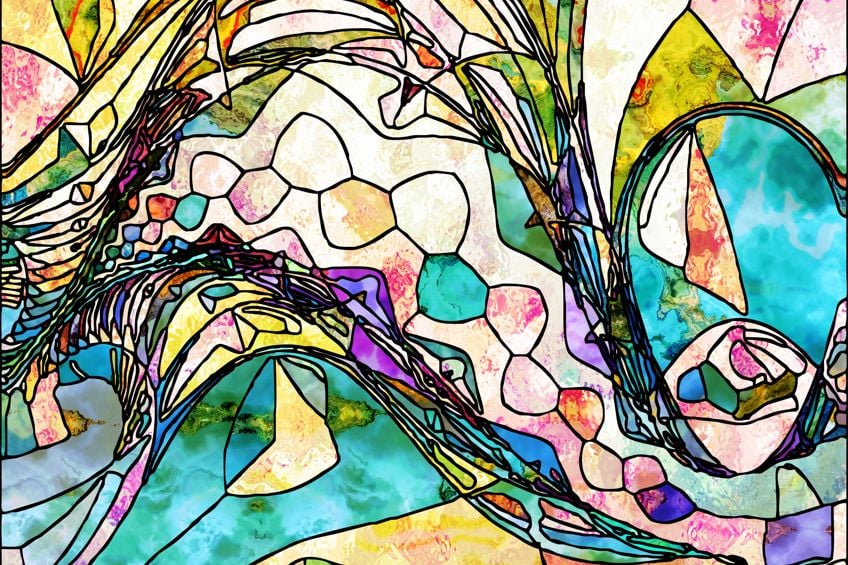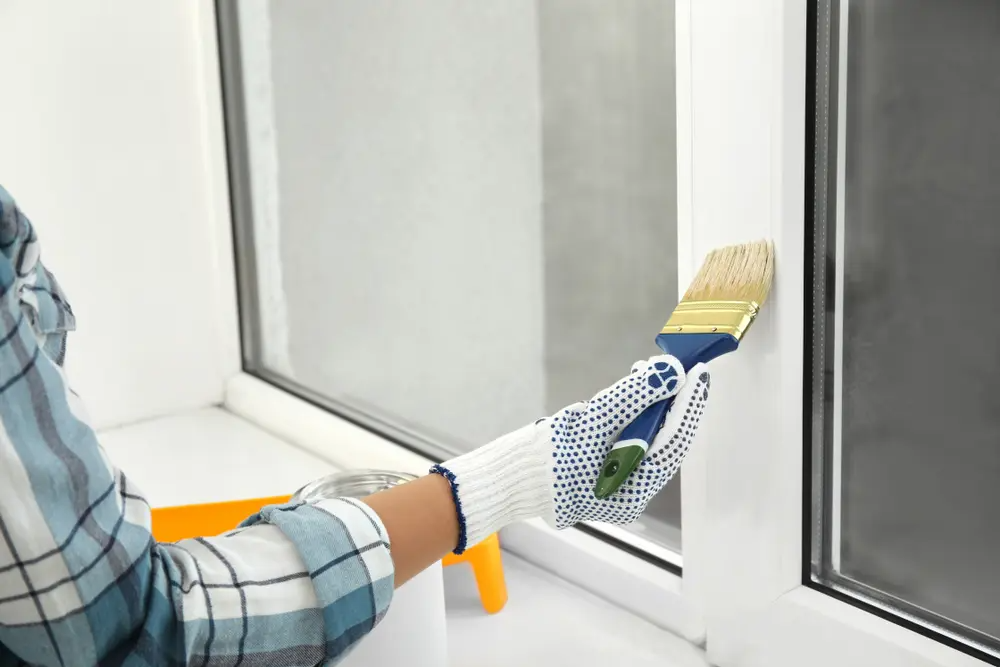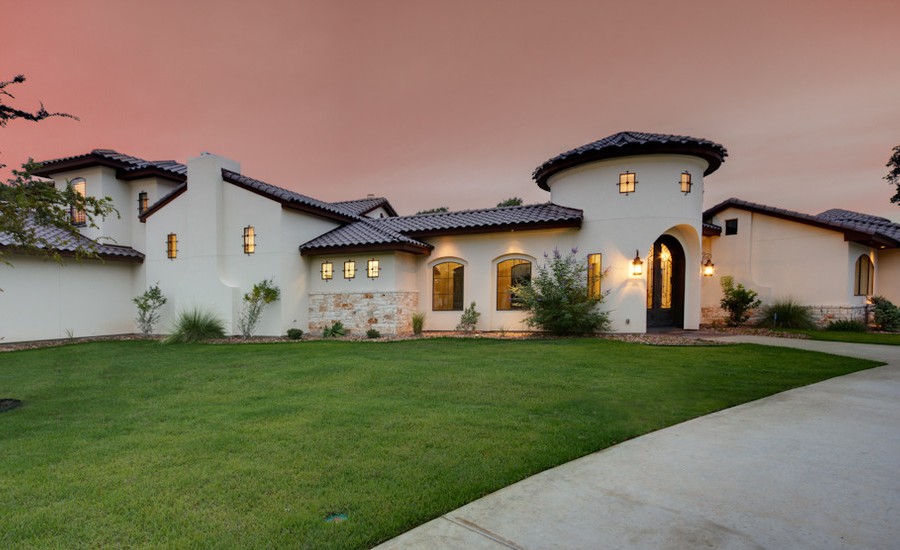Indeed the glasses provide clear visibility through and through, but it gets boring to look at after a while. Giving it a new look with paint is an excellent way to remedy this issue.
Yes, it’s possible to change the boring look of your glass and provide it with an amazing look through painting. Glass painting provides you with a whole new area to explore.
You can show your creativity on your glass jars, windows, and doors. The only limit is your imagination and creativity. It’s also a good way to keep your kids busy and helps to improve their creativity.
If you wish to paint your glass and give it a new and exciting look, then you came to the right place. Because here we’re about to discuss how you can effectively paint your glass along with its necessary aspects.
Let’s get started.
Why Do You Need To Paint Your Glass?
Painting on your glasses has both decorative and functional purposes, which leads to numerous reasons such as privacy, reducing boring looks, practicing your own creativity, and many more.
With glass painting, you can add an artistic flair to your household environment, which is a fun experience for you and your kids. As you’re well aware, glass windows and doors may provide sound privacy but don’t provide visual privacy.
In such cases, paint comes in handy. Not only can you provide an artistic look over your glass windows and doors, but also you can improve their visual privacy.
Which Paint Is Effective For Glass Paint?
Glass has a slippery surface on them. So before you jump into painting glasses, you should know not any paint would be effective for painting your glass. You’ll need paint that has the fast-drying capability.
Because of its slipperiness, any oil-based paint is useless, especially for glasses in windows. However, oil-based paints are effective on wood-like objects. So, the question is how to paint glass windows and which paints are most effective, right?
As we mentioned earlier, you need fast-drying paint for painting on glass. For this, you can try out acrylic paints or solvent-based paints. But solvent-based paint, however, has a higher toxicity level in comparison to acrylic paints. So for health purposes, you should avoid any toxic paint.
However, there is solvent-based paint that contains zero toxicity. Acrylic paint on the other hand is the most versatile paint there is and has no side effects. You can easily use this paint for any glass surface.
Just so you know, there are several types of acrylic paints that give your glass- glossy, glitter, frosty, and crystal effects. These effects bring different visuality to your glass surface, that’s attractive to look at. So check out each and everyone before you start painting.
Essential Methods For Effective Glass Painting
If you don’t know the techniques of using the paint over the glass surface, you might make a mess and ruin it in the process. And no one wants that, right?
If you have never painted over the glass then we suggest, try your hand over a separate piece of glass, which will allow you to get a proper practice. It’s also helpful if you wanna try out new designs.
Having said that, we’ve prepared a few essential methods that will help you paint over your glass surfaces with utmost effectiveness.
Instruments
First things first, let’s have a look over the instrument you’ll need to effectively paint over the glass surface.
- Thin Paintbrush.
- Foam Brushes.
- Acrylic paint.
- Paint Trays.
- Dipping alcohol.
- Paper towel.
- Grease pencil.
- Tape
After you collect all the necessary items for your glass paint. Then you can move on to the fun part, and that’s start painting.
Let’s begin, shall we?
Clean The Glass Surface
Before you start painting, you must clear out any debris like dust, moisture, dirt spots, etc. from the glass surface. Take a paper towel and wipe out any moisture over the glass.
Then soak one with alcohol and clear out the stuck debris from it. You must ensure thorough cleaning, as it’s crucial to have a smooth finish for painting. Because it’s impossible to paint on dirty glass.
Prep The Surface Design
Now comes the part where you prep the glass surface. In the beginning, start covering the spaces where you don’t want to paint with tape. It’ll help you avoid any unnecessary brush strokes over the places you don’t want to paint.
Then take a grease pencil and start outlining your desired design over the glass surface. It’ll help you get an overall idea about how the painting will look over the surface. And if you don’t like the design by any chance, you can easily remove it by rubbing alcohol.
Furthermore, take a foam brush, mix it with white paint, and start stroking it over the outlined area. In doing so you’ll be covering and selecting the specific area of painting. It helps to take a mental picture of the painting area and allows you to better mix the colors.
Paint Mixing & Application
You should know if you are going to use a single-layered color over the glass surface then you don’t need to mix any color. If it’s several layered paintings then, paint mixing is needed.
Take the necessary acrylic paint color and pour it on a paint tray and start mixing it with a foam brush. Remember to continue the mixing process until you get the desired color scheme.
When you’re done mixing up the colors then carefully start painting over the white painted area. While painting you should take a breather and have a look over it so that you don’t miss any spots of color up any wrong area.
Always keep a paper towel on hand to wipe out any mistakes before the color dries. If some colored areas need thinning, you can take a soaked rag and a slight rub with it will do the job.
And always remember to start with one color, don’t start painting with all colors, it can overwhelm you and it’ll be harder for you to keep track of the painting process.
Curing The Glass
After you’ve done giving the glass your desired look or texture, now you need to let the paint dry. Otherwise, the paint might get ruined. Your glass paints need heat to get dry.
Sometimes with smaller glass paint projects like painting on glass bowls, water glass, etc., you can dry them up quickly in an oven with low heat. This, however, is not possible with glass windows or doors, for obvious reasons.
Generally, window or door glass paint takes weeks to dry. You can speed up the process by using a hairdryer, but it won’t help you much as it can’t produce enough heat. As far as we know, there’s nothing to do but wait and prevent anyone from touching the paint by any chance.
Necessary Safety Measurements
Before you start painting, you should wear a pair of hand gloves. It’s an essential safety measure to keep your hands and painting safe. If you are not careful, your hand might get cut while painting.
Furthermore, while working on the paint job, it’s natural for your palms to sweat. This sweat can get mixed up with the paint which can ruin the paint mixing. Thus, causing an imperfect result. Hand gloves can help you avoid it.
Final Views
Glass painting is a fun experience to have for either you or your little ones. It brings out the artistic capabilities inside and helps you get rid of the boring look of the glass surface.
Also, glass painting allows you to maintain privacy while making it look good. In the previous segments, we’ve already shown you the glass painting method. With these methods, you can paint any glass surface of your desire.
Good luck and have fun while doing it.




















